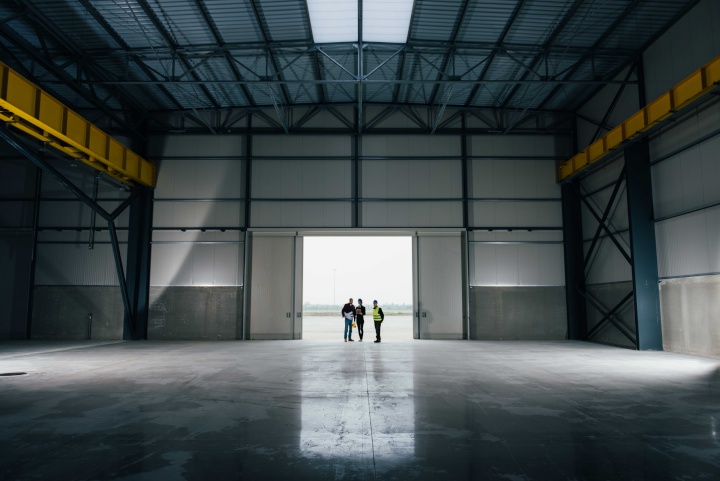Industrial market well-insulated post-COVID-19

Prior to
global pandemic upheavals, the industrial sector of New
Zealand’s workforce was trucking along at a great rate of
knots and tenant demands for business space were outweighing
the availability of industrial premises.
Vacancy rates were low, competition for space was high – particularly in the logistics and supply chain category – and vigorous online shopping activity meant warehouse properties for efficient stock fulfilment capacity were as scarce as hens’ teeth.
Investors were hungry for industrial property assets and competing confidently in the auction room while there was a lag in supply of new-build industrial premises to satisfy this growing appetite for industrial stock.
Then along came COVID-19 with its numerous disruptors to all facets of business life.
Bayleys’ national director of industrial and logistics, Scott Campbell, says overseas examples show the industrial market will largely be quite well-insulated from major disturbance in the outbreak’s wake and it’s been “all hands to the pump” for the industrial team.
“Industrial looks set to emerge as one of the hero asset classes post-pandemic given that even throughout lockdown, Bayleys’ sales and leasing teams around the country have fielded good enquiry on industrial property both for sale and lease,” he says.
“I don’t expect that clear investor/tenant confidence to ease off – despite acknowledging that there will be casualties among businesses in certain categories and for some parts of the market, the comeback will be slow.
“Think anything related to tourism for example, along with those businesses reliant on products from overseas where supply chains have been severely disrupted.”
Campbell says the industrial sector has outperformed all other sectors in the commercial property landscape for several years now and the COVID-19 environment has, if anything, further demonstrated the resilience and robustness of industrial property and the sector’s wider contribution to the economy.
“Some of the trends we were seeing pre-COVID were fast-tracked as a result of increased demand in certain areas once the restrictions to daily life really kicked in,” he says.
“Online shopping capabilities through ‘dark stores’ for supermarket chains were already well-advanced but accelerated when demands for home-delivered groceries escalated.
“We’ve also seen the importance of last mile delivery in meeting this unprecedented demand by online shoppers and once the country moves down alert levels and supply chains gear up again, this is going to be even more evident.”
Campbell says New Zealanders have become more click heavy online thanks to a restriction on their movements in recent weeks and this energetic activity may bring forward online/e-commerce initiatives and automation developments that many businesses had been working away on quietly.
“It’s taken a global pandemic to kick-start a more tech-savvy sector and that’s going to bring about more change in the industrial property market as businesses look to activate new initiatives in an effective and efficient way.
“This crisis has proven that New Zealand’s supply chain is, overall, resilient and given that we produce a lot of products that the world wants and some components of the export market have already or are expected to re-emerge quickly, the broader industrial sector seems at this early stage to be holding up,” says Campbell.
Bayleys Auckland Industrial director, Sunil Bhana says changing business needs emerging from the collective pandemic experience will drive a change in businesses’ property size requirements.
“We’re seeing tenants looking to lease new premises while potentially subleasing or assigning leases on their existing premises,” says Bhana.
“This is where good relationships between landlords and tenants becomes crucial, and the Bayleys’ team is being called on to negotiate new leases in conjunction with lease terminations to make the process as seamless as possible.
“Hub and spoke operations will also see a resurgence, where businesses look to add to their core space with smaller satellite premises, often in a different geographic location, with capacity to offer flexible working conditions.”
Scott Campbell says another trend around the country is the owner-occupier market actively looking to free up business capital through sale-and-lease-back transactions.
“While there had been strong activity in this area prior to the COVID-19 event, during lockdown Bayleys’ sales and leasing team fielded numerous requests for proposals from business owners seeking to improve their balance sheets and fuel business growth by exiting property ownership,” he explains.
“While owning their own business premises can give security of tenure, relinquishing the ties of property ownership through sale-and-lease-back can allow a business to continue working without disruption from a fit-for-purpose property – all while having capital to plough back into their operation to improve productivity or to pivot their focus,” says Campbell. ‘
“For those businesses that perhaps won’t be as quick out of the blocks during these uncertain economic times, selling up and negotiating a lease to remain onsite could provide some certainty and, in taking away the onerous tasks of property ownership, could even free up the mind for innovation.”


 RNZ: Parts Of Power System Could Be Out For 36 Hours In Event Of Extreme Solar Storm
RNZ: Parts Of Power System Could Be Out For 36 Hours In Event Of Extreme Solar Storm NZAS: New Zealand Association Of Scientists Awards Celebrate The Achievements Of Scientists And Our Science System
NZAS: New Zealand Association Of Scientists Awards Celebrate The Achievements Of Scientists And Our Science System Stats NZ: Retail Spending Flat In The September 2024 Quarter
Stats NZ: Retail Spending Flat In The September 2024 Quarter Antarctica New Zealand: International Team Launch Second Attempt To Drill Deep For Antarctic Climate Clues
Antarctica New Zealand: International Team Launch Second Attempt To Drill Deep For Antarctic Climate Clues Vegetables New Zealand: Asparagus Season In Full Flight: Get It While You Still Can
Vegetables New Zealand: Asparagus Season In Full Flight: Get It While You Still Can  Bill Bennett: Download Weekly - How would NZ telecoms cope with another cyclone
Bill Bennett: Download Weekly - How would NZ telecoms cope with another cyclone



